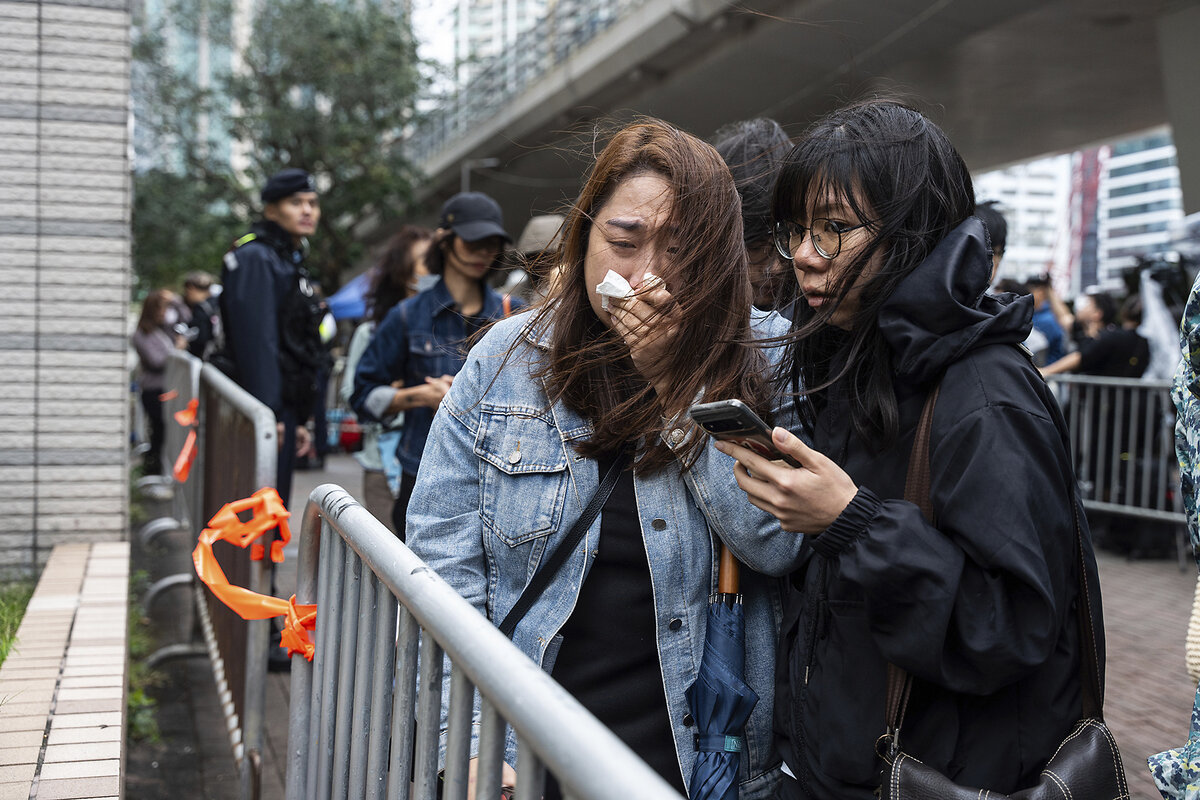Ukraine’s use of long-range missiles to attack Russia comes at a time when its Western allies and Russia are gearing up for expected peace talks involving the coming Trump administration.

Why is Christian Science in our name?
Our name is about honesty. The Monitor is owned by The Christian Science Church, and we’ve always been transparent about that.
The Church publishes the Monitor because it sees good journalism as vital to progress in the world. Since 1908, we’ve aimed “to injure no man, but to bless all mankind,” as our founder, Mary Baker Eddy, put it.
Here, you’ll find award-winning journalism not driven by commercial influences – a news organization that takes seriously its mission to uplift the world by seeking solutions and finding reasons for credible hope.
Explore values journalism About usMonitor Daily Podcast
- Follow us:
- Apple Podcasts
- Spotify
- RSS Feed
- Download
 Mark Sappenfield
Mark Sappenfield
One could be forgiven for wondering how, in 2024, some 50% of rural Americans lack access to high-speed internet, according to one study. In his story today, Cameron Pugh shows that there are solutions. But they likely will take vision and commitment.
Admittedly, this is not a get-out-the-vote topic. But for many rural areas, it would likely be more transformational than the issues that are.
American greatness has often come from the largeness of its ideas matched with the steadfastness of its determination. The culture wars are unlikely to unfreeze from their partisan divisions anytime soon. But so many other areas are ripe for American ingenuity and just waiting for the nation to thaw.
Already a subscriber? Log in
Help fund Monitor journalism for $11/ month
Monitor journalism changes lives because we open that too-small box that most people think they live in. We believe news can and should expand a sense of identity and possibility beyond narrow conventional expectations.
Our work isn't possible without your support.
Today’s stories
And why we wrote them
( 5 min. read )
Today’s news briefs
• Iran uranium stockpile: The United Nations’ nuclear watchdog says Iran has defied international demands to rein in its nuclear program and has increased its stockpile of uranium enriched to near weapons-grade levels.
• New Zealand Indigenous law: Police say tens of thousands of people have arrived at New Zealand’s Parliament in protest of a proposed law that would redefine the country’s founding agreement between Indigenous Māori people and the British Crown.
• Brazil coup plot: Brazilian police have arrested five officers accused of a coup plot that included plans to overthrow the government following the 2022 elections and kill then-President-elect Luiz Inácio Lula da Silva.
• Pennsylvania Senate election: The state continues to count votes in the United States Senate election between Democratic Sen. Bob Casey Jr. and Republican David McCormick. On Nov. 18, the state Supreme Court ordered counties not to count mail-in ballots that lack a correct handwritten date on the return envelope.
( 5 min. read )
Hong Kongers once believed that Beijing would honor its agreement with London to preserve the former British colony’s political freedoms. Heavy prison sentences handed down Tuesday to 45 pro-democracy activists suggest instead a Chinese bid to crush a generation of dissenters.
( 6 min. read )
In today’s world, access to fast, reliable broadband internet can be key to education and employment. Communities — especially rural ones — are finding innovative ways to use state, federal, and municipal funds to connect.
( 5 min. read )
Farming by its nature puts people in touch with their land, their community, and their traditions. In besieged Gaza, after more than a year of war, the olive harvest and the production of its oil are a vital source of resilience.
( 4 min. read )
Kamala Harris hoped to declare victory at Howard University on election night. That didn’t happen. So many students at one of America’s top Black universities are turning to the question: “Where do we go from here?”
Books
( 2 min. read )
Our picks for the 10 best books of November include poems by Billy Collins, nature essays by Robin Wall Kimmerer of “Braiding Sweetgrass” fame, and biographies of Woodrow Wilson, Johnny Carson, and Benjamin Franklin.
The Monitor's View
( 2 min. read )
Sometimes advanced intelligence pops up in those deemed in need of intelligence. A survey earlier this year found 59% of students in American higher education routinely use generative artificial intelligence. Only about 40% of their instructors are using it.
Educators have taken note. Schools across the United States are actively deciding how to adapt the new technology. Potential uses range from creating personalized lesson plans for each student to helping them figure out financial aid for college. In some classrooms, it is being used to augment critical thinking by allowing students to see an inherent flaw in AI and then correcting it. That looks like creative problem-solving.
According to a Rand Corp. survey in early 2024, a small but growing number (18%) of K-12 teachers use AI regularly to teach. Another 15% said that they have used it once. Almost 30% said that they have policies in development on the use of AI, which is a great start.
It might be too early to assess whether AI-enhanced teaching can produce better educational outcomes and, if so, at what financial cost. But one thing is certain. Many schools are eager to use it to help ensure no student is left behind, especially underprivileged students. The Rand survey showed that schools most likely to have teachers using AI were mainly in white, affluent communities.
By the end of the 2023-24 school year, 60% of school districts had planned to train teachers on AI, according to Rand. The training includes deciding on guidelines for AI use as well as for how to deal with ethical issues, such as students using AI to generate content and submitting it as original work.
There will always be a need for human intelligence to give nuanced, thoughtful interpretations of information. AI can’t do this – at least not yet. Still, educators seem ready to follow students in adapting the technology. Some decision-makers are thinking big. In August, Yale University announced it would invest $150 million over the next five years in AI initiatives. That is worth noting. One of the world’s leading educational institutions realizes AI is something not to shy away from, but to embrace.
A Christian Science Perspective
Each weekday, the Monitor includes one clearly labeled religious article offering spiritual insight on contemporary issues, including the news. The publication – in its various forms – is produced for anyone who cares about the progress of the human endeavor around the world and seeks news reported with compassion, intelligence, and an essentially constructive lens. For many, that caring has religious roots. For many, it does not. The Monitor has always embraced both audiences. The Monitor is owned by a church – The First Church of Christ, Scientist, in Boston – whose founder was concerned with both the state of the world and the quality of available news.
( 3 min. read )
As we understand that God has made us entirely whole and loved, we’re empowered to pursue right activities.
Viewfinder
Palestinian children play during the Eid al-Adha holiday, in Gaza City, June 6, 2025.

A look ahead
Thank you for spending time with the Monitor Daily today. For tomorrow, we’re working on a story about the Palestinian Authority, which is in disarray among rising sentiment in parts of Israel that the West Bank should be annexed. Donald Trump’s choice for the incoming U.S. ambassador endorses the idea. The PA’s response? Turn to Saudi Arabia.









